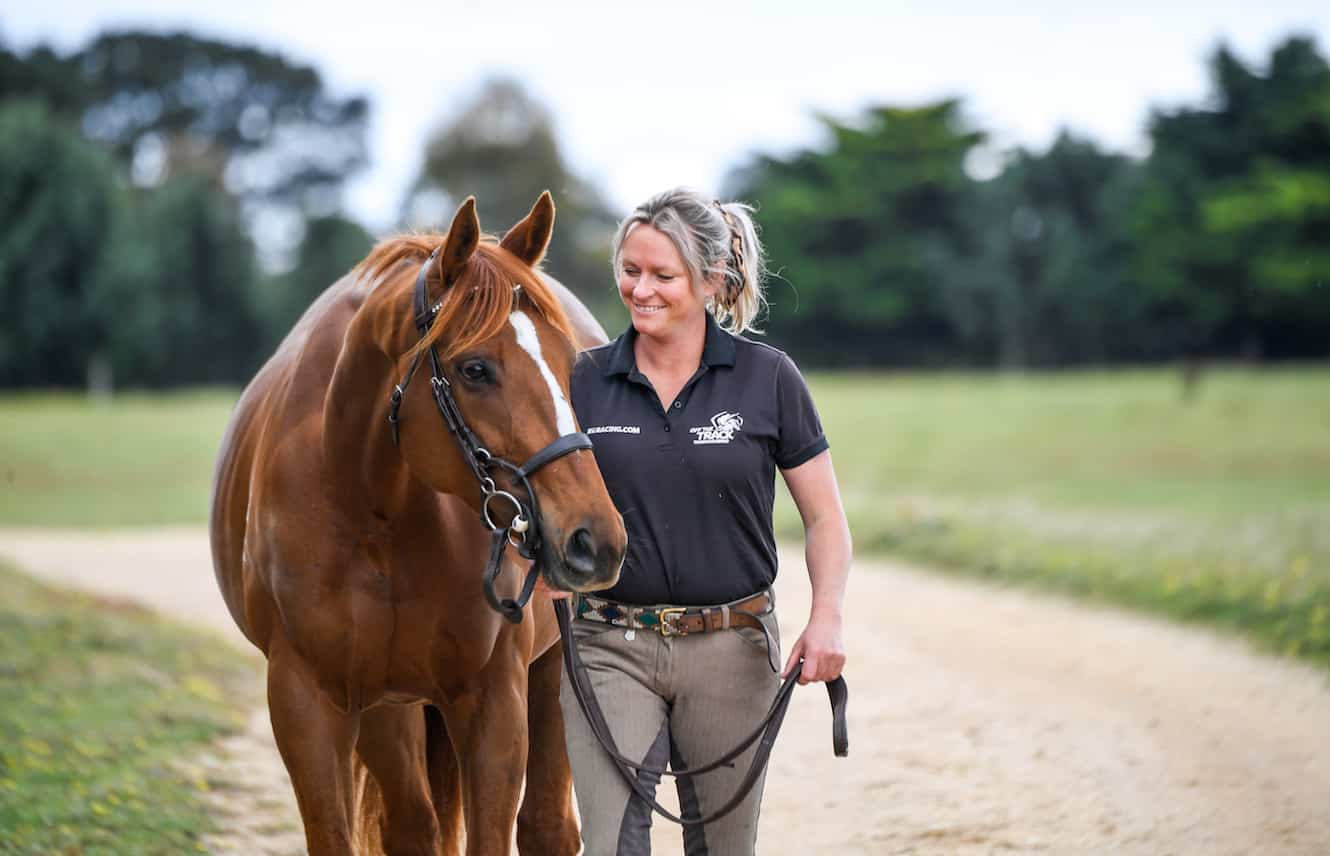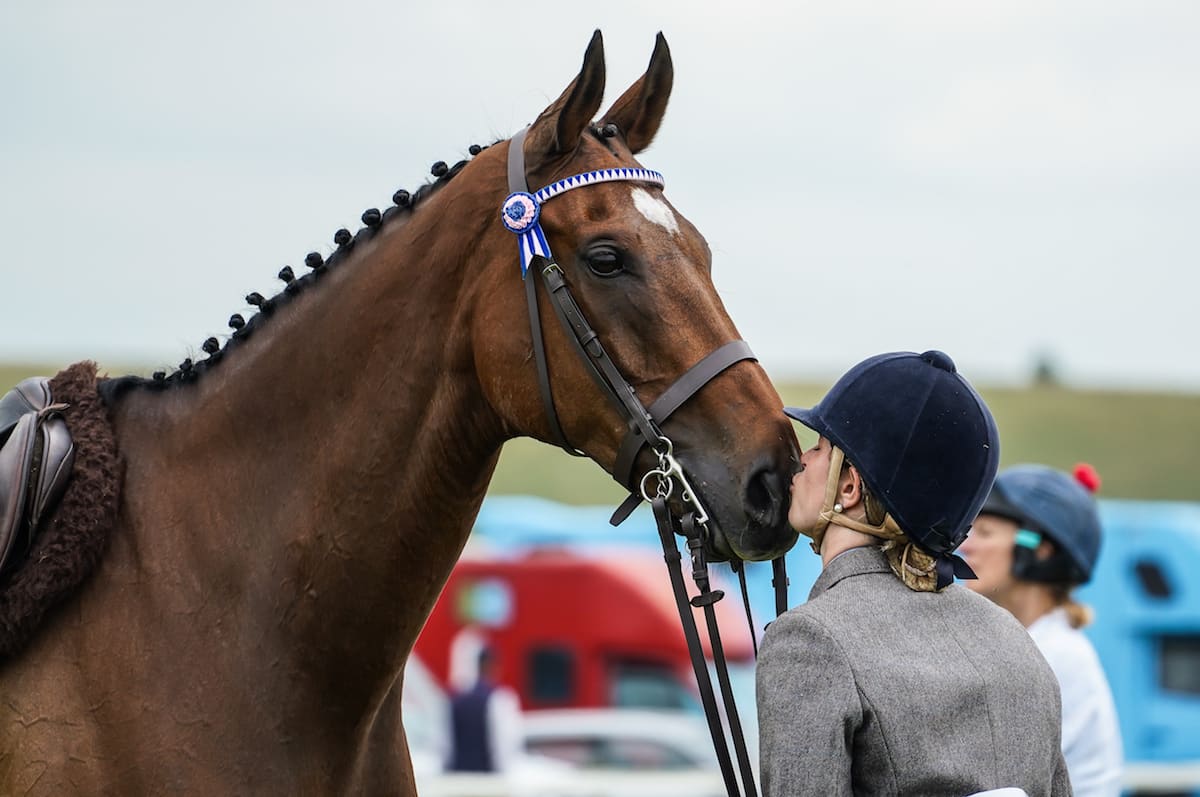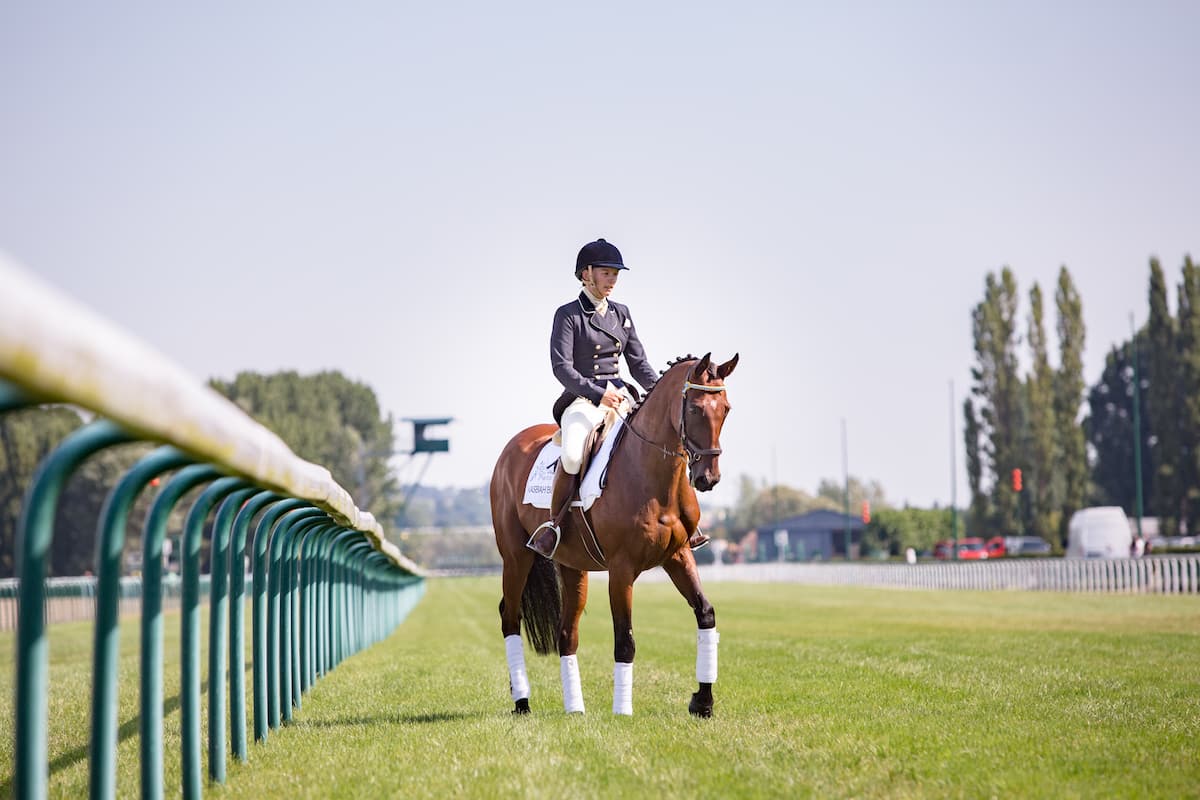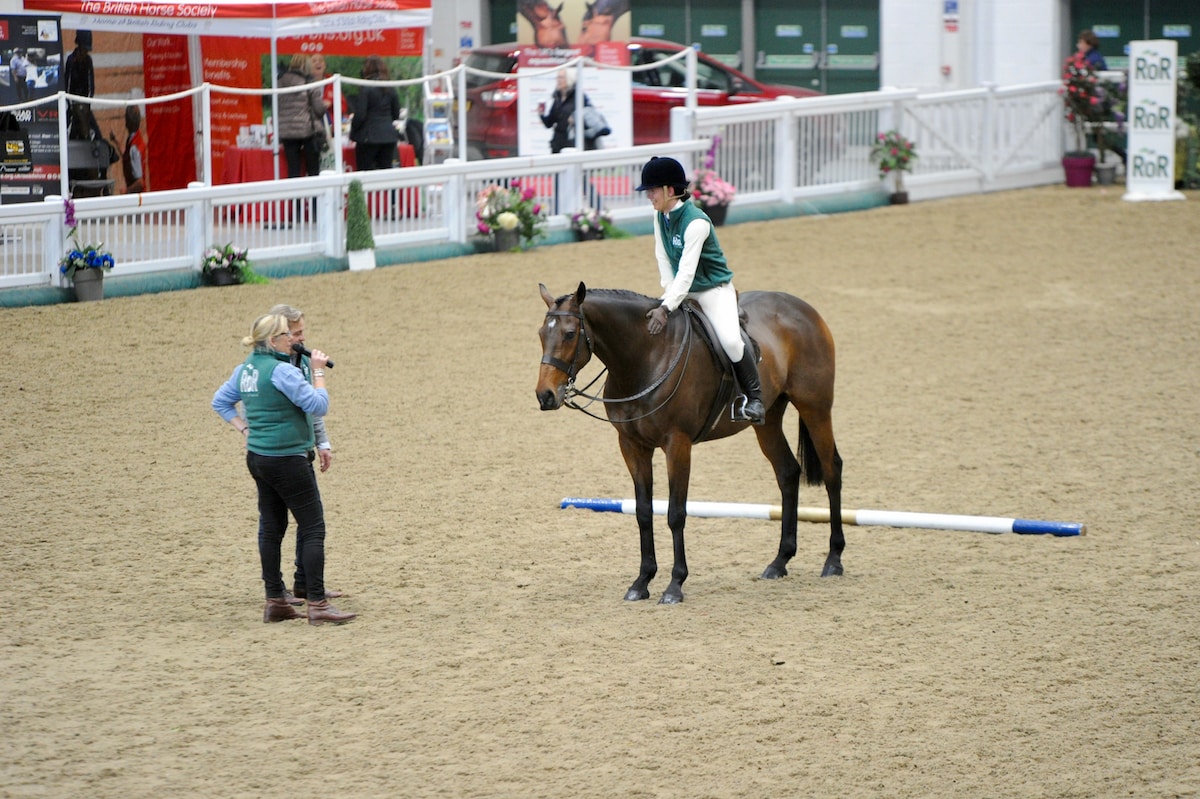How racing and aftercare organizations around the world are making strides to care for horses once their racing careers end

Racing Victoria’s Off The Track connects racehorse owners with qualified retrainers, and its RESET program helps retrain retired racehorses like Mareeza Brown (Big Brown — Mareeza [AUS], Freeze [AUS]) here. Courtesy Racing Victoria
In October 2019 the Australian television station ABC aired a segment depicting ex-racehorses subjected to heartbreaking acts of cruelty in local slaughterhouses. The outcry of the Australian public, whose love for the billion-dollar horse racing industry ranked second only to Aussie rules football, could be heard to the ends of country’s blue shores.
It was, unquestionably, the beginning of a critical turning point that would transform Australia’s horse racing industry and fuel an interest in Thoroughbred aftercare. Today, nationally sponsored programs like Racing Victoria rehome hundreds of off-track Australian Thoroughbreds every year with the help of qualified retrainers.
But this down-under transformation isn’t alone: It echoes a worldwide makeover that’s already in progress, says Diana Arbuthnot, chair of International Forum for the Aftercare of Racehorses (IFAR) and the U.K.’s Retraining of Racehorses program.
“We live in a world where we can’t ignore it anymore,” she says. “People are realizing — and regulatory bodies are realizing — that we need to act and to be seen doing something. The international picture is really growing.”
The Drivers: National Involvement, Traceability, Culture

The International Forum for the Aftercare of Racehorses has taken a proactive approach to aftercare, building a marketplace for Thoroughbreds and making them a fashionable name. Courtesy RoR/Hannah Cole Photography
The International Federation of Horseracing Authorities (IFHA, an organization that establishes and promotes best practices, collaboration and information exchange among racing nations) does not oversee aftercare programs, but it charges owners and local regulatory boards with the responsibility. In its “Principles of Good Practice for the Aftercare of Racehorses,” the IFHA states: “To maintain and strengthen the social acceptance of horse racing, all racing stakeholders must ensure that appropriate care and husbandry is provided for ex-racehorses.” It calls on local racing authorities to cooperate with horse welfare organizations to retrain and rehome horses and monitor their ongoing welfare.
The success of aftercare programs within each country depends, in part, on involvement at a national level, says Arbuthnot. “A lot of these countries have several regulatory bodies in different states, and everything’s run differently,” she says. “Here in the U.K. we’re lucky that we have one overall body (the British Horseracing Authority) that helps us with messaging.”
French horse racing is governed by France Galop, which works in tight collaboration with the national charity Au-Delà des Pistes (“Beyond the Tracks”). “They’re backed by their industry quite well,” Arbuthnot says. “You can have a parade (of ex-racehorses) in the middle of a race day, which I can’t do here in the U.K. They’ve been very supportive.”
France is also unique in that it benefits from a longtime national database that provides traceability of every horse through the horse’s papers and obligatory microchip, says Aliette Forien, president of Au-Delà des Pistes. The horse’s entire life history can be traced, creating transparency and, hence, a greater sense of responsibility among industry stakeholders for the trajectory each horse’s life takes.
The U.K. implemented such national traceability requirements in 2022. While other countries typically have registries of racing Thoroughbreds, they don’t often follow the horses once they leave the tracks.
And that’s an issue of growing concern in Australasia, says Natalie Waran, PhD, professor of One Welfare at the Eastern Institute of Technology, in Hawke’s Bay, New Zealand. “There has been a call for Thoroughbred traceability to be a priority for ensuring that (the horse’s life after racing) remains the responsibility of the industry and of the people who have benefited from that horse,” she says. As of 2014, Australian racehorse owners were required by law to declare whether a horse has retired and to notify authorities of a horse’s death.
Whetting the Market for OTTBs

France Galop and its national charity Au-Delà des Pistes host parades and demonstrations of ex-racehorses in new careers on race days. Courtesy Au-Delà des Pistes
Across the globe people are understanding what truly improves the lives of OTTBs: marketing.
“Very early on we took a decision to be more proactive, rather than reactive,” Arbuthnot says. “By proactive I mean that we built a marketplace for Thoroughbreds and made them a fashionable name. Because, you know, 20 years ago, they weren’t.”
The IFAR encourages countries to hold OTTB-exclusive shows, parade OTTBs across racecourses, host awareness days and hand out prizes to the best OTTBs in multibreed events. “We created a completely new market,” she says. “People who never thought of getting a Thoroughbred now think that it’s quite a good idea.”
That marketing is evident in the U.S., which has “made a big U-turn” in recent decades, Arbuthnot says. “When we first went over there 20 years ago, they weren’t doing much. Then (the Retired Racehorse Project) started doing the Makeovers, which was an amazing idea.”
New Zealand’s racing authorities support OTTB marketing through partnerships with national sport federations such as polo and showing, which “share our passion and commitment to showcasing the versatility of Thoroughbreds,” says Martin Burns, New Zealand Thoroughbred Racing’s general manager of welfare and sustainability.
They also sponsor Event Stars, a national retraining and rehoming organization that manages 250 OTTBs a year, as well as Beyond the Barriers, which provides education and organizes OTTB-specific events, Waran says. Additionally, the country welcomes back homebred horses after the conclusion of their racing careers in Hong Kong and Singapore.
Australia’s Racing Victoria has developed a program called Off The Track (OTT) that connects racehorse owners with qualified retrainers. Through an online community, owners can upload photos of and receive offers for their horses. OTT hosts around 100 events and clinics per year. It even has a pathway program called Racehorse, Evaluation, Support, Education and Transition (RESET) to retrain retired racehorses that struggle with their first transition out of racing.
In France, Forien ensures ex-racehorses from across the country benefit from her team’s knowledge and experience as a centralized initial step before getting adopted out through local charities. This helps create a positive image of the OTTB as an intelligent and versatile athlete, she says. “They’re ideal for amateurs — and sometimes even professionals — in a variety of disciplines,” she says, adding that French OTTBs are particularly sought after for horseball, a popular mounted team sport in France.
Japan, meanwhile, has “made great strides” since 2018, says Arbuthnot, after decades of sending many ex-racehorses to slaughter and others into riding clubs with insufficient retraining. That started to change four years ago, when Japan reached out to the IFAR.
“They picked up the (IFAR) module straightaway, working well with us to begin with, and then they set up their own center,” Arbuthnot says. “And now they have a very good aftercare program going.” The country recently hosted its fourth annual Retired Racehorse Cup, a dressage and show jumping event.
As for Hong Kong, its Jockey Club Equestrian Affairs Department opened its second Retired Horse Unit in mainland China in late 2020 to complement its expanding Retired Racehorse Programme, which began in 1964 at the Club’s national equestrian centre. There, retired racehorses benefit from extended rest and rehabilitation time, including access to paddocks, a swimming pool, a water treadmill, a cold water spa and laser therapy, prior to retraining, says Retired Horse Unit manager Natasha Rose.
Owners pay an obligatory retirement fund in advance for each young Thoroughbred they import into Hong Kong, Rose says. When the horse retires, the owner can either make arrangements to export the animal themselves or relinquish ownership to the Hong Kong Jockey Club, which then oversees the horse’s rehabilitation, retraining and rehoming. Many serve as riding school horses within the Jockey Club’s riding center; others are exported to a partner organization in New Zealand, she says.
Elsewhere in Asia, new projects are showing promise. Malaysia, for example, has followed Japan’s lead and is “really making an effort,” Arbuthnot says.
Back in Europe, Ireland has recently initiated its first aftercare program, called Treo Eile. Launched in March 2021, Treo Eile has already found a strong following on social media that hints at a successful ongoing program, Arbuthnot says.

Organizations like Retraining of Racehorses market OTTBs and their versatility through training demonstrations, awareness days and Thoroughbred-only events. Courtesy RoR/Majestic Photography
Take-Home Message
As the public takes a greater interest in the welfare of racehorses worldwide, local racing authorities and charities are stepping up to ensure good aftercare for horses leaving the tracks. But with different funding and regulatory body support, OTTB-focused efforts are advancing at different rates across the globe.
“Of course it’s going to be challenging,” Arbuthnot says. “And to say that every country is going to have marvelous aftercare is pie in the sky. But I think we’re making quite a lot of progress.”
This article was originally published in the Spring 2022 issue of Off-Track Thoroughbred Magazine, the only publication dedicated to the Thoroughbred ex-racehorse in second careers. Want four information-packed issues a year delivered to your door or your favorite digital device? Subscribe now!

